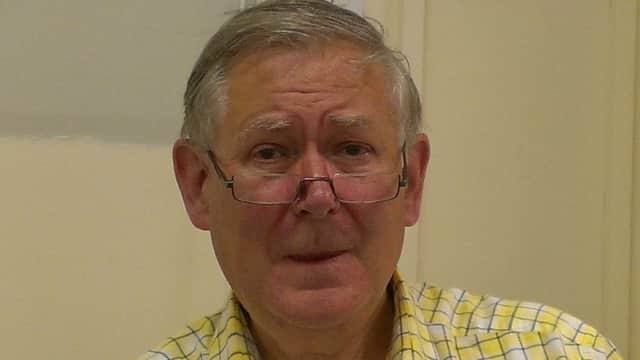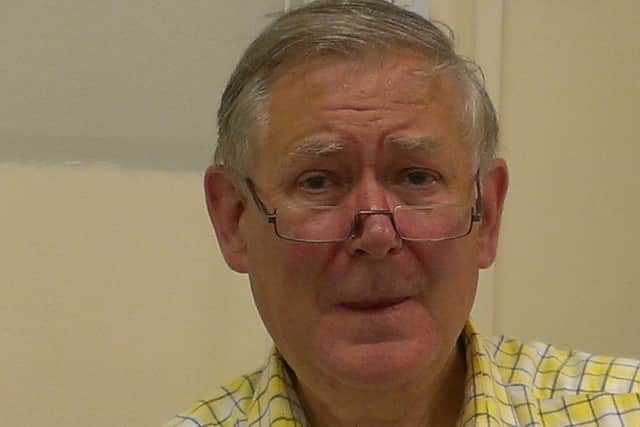Chichester in the 1960s


“The 1960s are remembered for the progressive attitudes of people but also for the way the hearts and souls were ripped out of our cities,” he said.
That was certainly the case in plenty of places. However Chichester, as Alan explains in his latest book, fared rather better. The demolition began, but Chichester was able to put the brakes on just in time. Along the way it gained some significant new buildings, not least the Festival Theatre.
Advertisement
Hide AdAdvertisement
Hide AdA key figure in much of it was Thomas Sharp, a distinguished town planner who was commissioned by the city council to consider the ways the city could be improved or modernised.


In 1947 he advocated the demolition of some 700 houses under a slum clearance programme. The city council adopted the plan, but Chichester’s good fortune, as Alan explains, is that the city council was slow to implement it.
His principal target was Somerstown, and the eastern side was lost. The western side (Washington, Parchment and Cavendish Streets) was saved.
“And the houses there are now changing hands for a quarter of a million, just the smallest ones. They hadn’t been in quite such a run-down condition, but Thomas Sharp had advocated demolishing the whole lot.”
Advertisement
Hide AdAdvertisement
Hide AdThose on the eastern side were destroyed, but then Laurence Olivier, artistic director of the fledgling Festival Theatre intervened.
“He started a national campaign about how bad the demolition was. Bill Fraser and Doris Hare bought a couple of houses on the western side, and suddenly it was very fashionable.
“Sadly for the eastern side it was too late.
“But because of Sir Laurence Olivier’s campaign and the public outrage, the brakes were applied in Chichester, and it was chosen as one of four cities for a study into conservation.
The others were Bath, York and Chester. Chichester went on to become one of the first conservation areas in the country.”
Advertisement
Hide AdAdvertisement
Hide AdAlan remembers the decade as one of contrasts then: “Chichester Festival Theatre was such an innovation.
In 1962 we gained this new theatre with no columns in the way of the audience view, and I remember as a boy watching it being built. It inspired me!
I tried to make a cardboard model of it. I thought it was simple, one hexagon overlaid on another, but it was much more complex than that.
“I used to take the dog up to Oaklands Park from our house in Orchard Street.
Advertisement
Hide AdAdvertisement
Hide Ad“I watched the decline of Somerstown and the contrast with this new theatre rising out of the park.
“It was a superb thing. The fact that Leslie Evershed-Martin managed to persuade Chichester to have this theatre, to find the money, to get Powell and Moya to design it and to have Laurence Olivier as the first artistic director was just amazing.”
Another significant 1960s addition to the city was the chapel at the then Bishop Otter College, now the University of Chichester.
When college principal Betty Murray told architect Peter Shepheard how much she had available to spend, he retorted: “For that sum I could only design a tent.”
Advertisement
Hide AdAdvertisement
Hide AdAs Alan explains, this is what he duly did, designing a steel and glass structure at a final cost which hit the money available almost spot on.
Another significant addition to the townscape in 1960s was the extension to the Theological College.
The students hated it and dubbed it Colditz, but the design by progressive architects ABK had the last laugh.
The extension was eventually listed as a fine example of brutalism.
Advertisement
Hide AdAdvertisement
Hide AdAlan offers his book as a text book on the decade, but this is his city, and inevitably there is a personal angle to the book too.
He recalls 1960s Chichester as a town of family businesses.
Now you’d have to go to Lewes to find the preponderance of local businesses which was once taken for granted in Chichester.
Alan also remembers the city for its coffee bars and its youth wing at the Fernleigh Centre.
He also remembers it as a place where the schools never closed.
“We had the big freeze winter of 1962-1963.
“It was the worst winter we had.
Advertisement
Hide AdAdvertisement
Hide Ad“I remember my parents talking about 47-48, but it was worse than that. It lasted for two months, but things just kept going.
“We all still went to school. It was my first year at the high school, and I remember trotting along there in my short trousers!”
n Chichester in the 1960s is published by The History Press, The Mill, Brimscombe Port, Stroud, Glos, GL5 2QG; 01453 883300; www.thehistorypress.co.uk.
It is available from local bookshops.